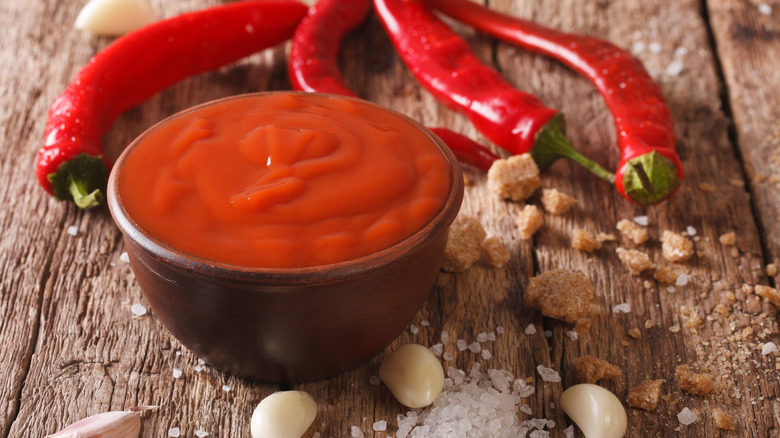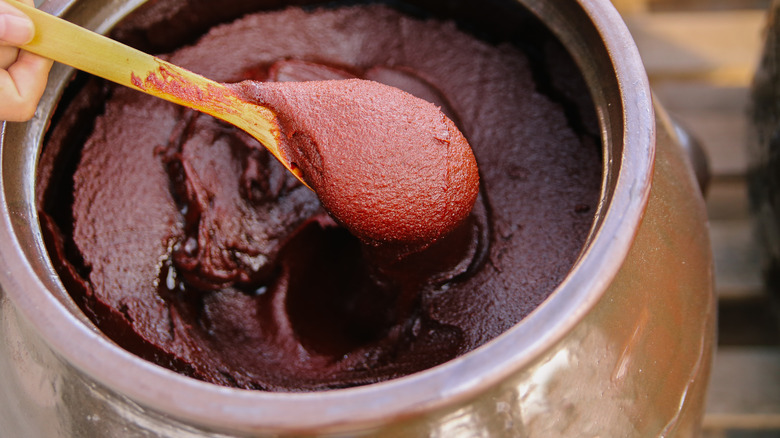Gochujang Vs. Sriracha: Which Is Spicier?
If you have a soft spot for spicy food and can't seem to get enough of hot sauces and fiery condiments, chances are that you've heard of gochujang and Sriracha. Perhaps they've even found a permanent space for themselves in your pantry. But what exactly goes into these sauces? According to PepperScale, both gochujang and Sriracha are made from chili peppers, look similar, and both have a subtle way of packing a spicy punch to meals. They also often come in potentially scary little containers that scream spicy.
Both gochujang and Sriracha have a distinct umami flavor to them, but the key difference lies in the intensity of that flavor. While gochujang gets its umami flavor from soybean paste, Sriracha's umami comes from garlic. PepperScale points out that gochujang doesn't use garlic at all, whereas the same ingredient plays a huge role in giving Sriracha its distinct flavor.
Meanwhile, gochujang uses glutinous rice as a central ingredient, which produces sugar over its fermentation period, according to KPOP Foods. This gives gochujang a sweeter flavor profile that is far more complex than that of Sriracha, thanks to the addition of savory umami flavors and peppery heat. Furthermore, while gochujang is fermented, Sriracha is not. This is precisely why PepperScale insists that gochujang offers everything that Sriracha has in terms of heat, all with the added complexity of fermentation.
When should you use Sriracha or gochujang?
So which sauce is the spicier one between the Sriracha and gochujang? Simply put, Sriracha is milder than gochujang. It's meant to be used as a condiment alongside cooked food. It will bring instant heat to your plate, but without overpowering the star of your meal — not unlike, say, spicy ketchup. Gochujang, on the other hand, can be added to any dish that could use an umami flavor boost along with the heat. This thicker sauce will help to give a meal depth, similar to how other culinary traditions might use miso or anchovy paste (via Paste).
While gochujang is a beloved staple in Korean dishes, stews, and soups, you don't have to stop there. Paste reports that it can easily be added to everyday cooking once you've gotten accustomed to its strong umami flavor. It can go in marinades and works excellently as a dipping sauce for chicken wings as well. You could also add it to some mayo and use it in sandwiches or turn instant ramen into a surprisingly complex and spicy treat. They also suggest that gochujang has a knack for bringing competing flavors together so go ahead and add them to other cuisines, perhaps using them to elevate a tomato-based pasta sauce.

